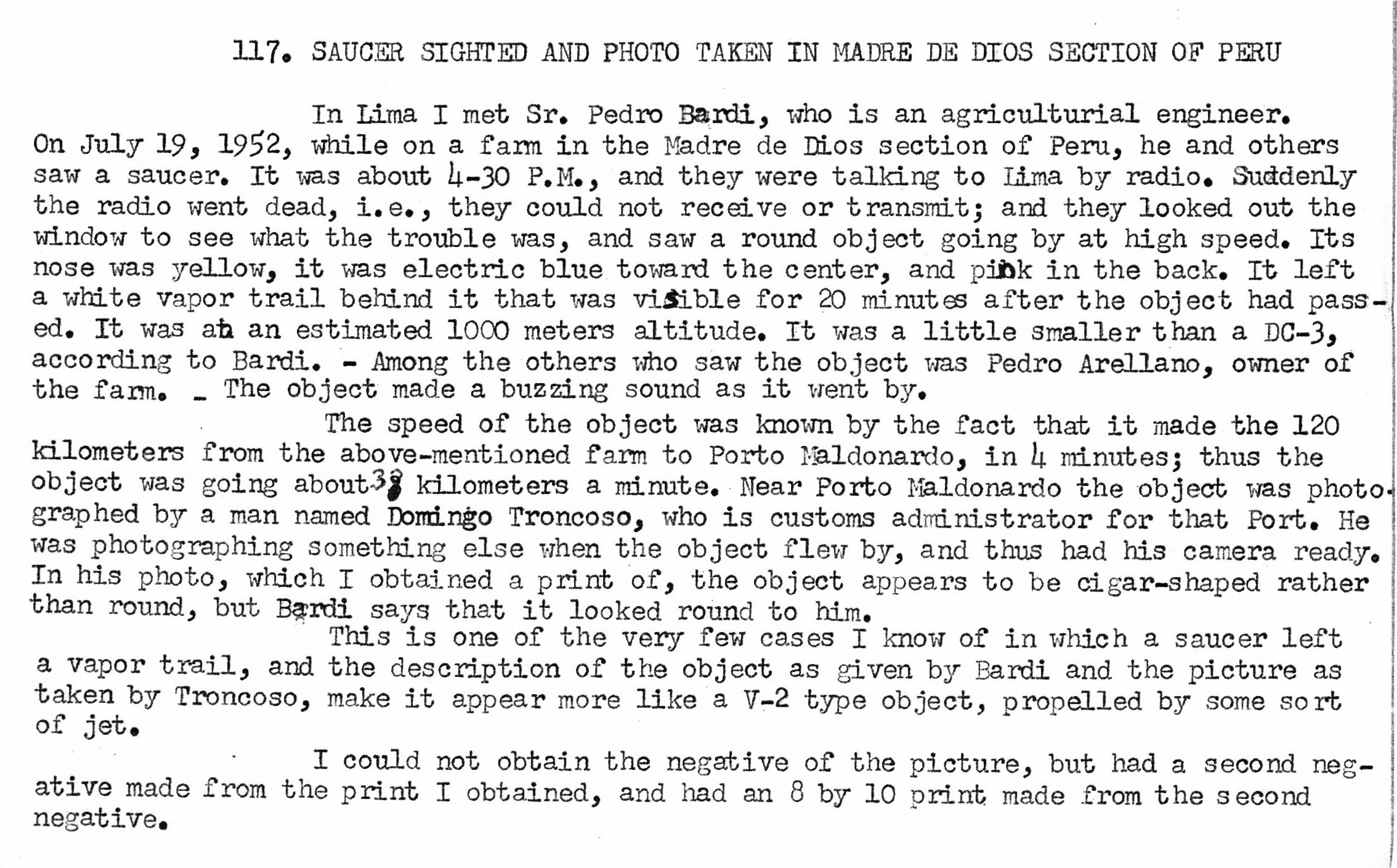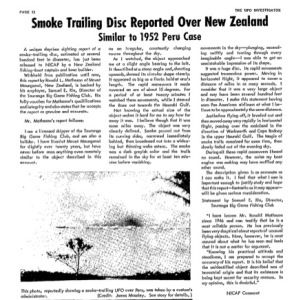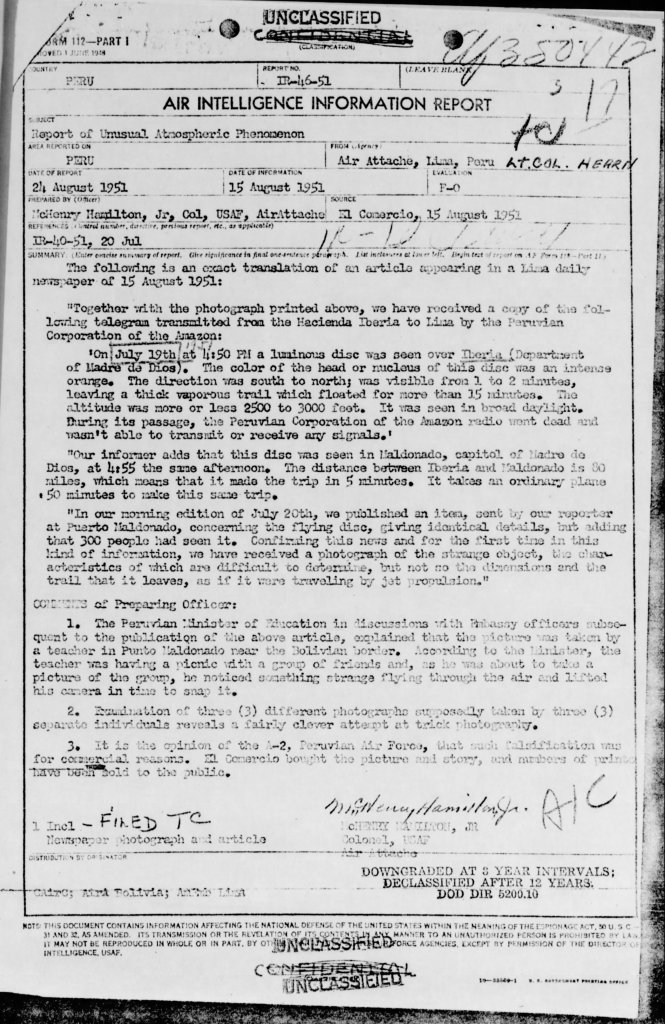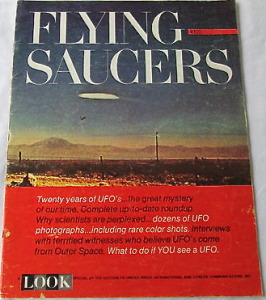A crash retrieval of a UFO by the US military. Rumors of advanced technology and small bodies in the wreckage - all followed by official denials. This is the story of something so secret, the US military shot down a craft and then ordered soldiers to jump out of planes to protect it.
There may be no aliens in this flying saucer story, but it's a true example of a cover-up by the military, and seeing it exposed may provide insight as to how the US government hides bigger secrets.
Hot Air
In mid-September 1955, there were several stories about flying saucers and how they were really only scientific research balloons launched by the Air Force. |
| Belleville Telescope, KS, Sept.15, 1955 |
 |
| AP Wirephoto, Sept. 15, 1955 |
 |
| Pacific Stars and Stripes, Sept. 14, 1955 |
A Crash Retrieval Story
An unintentionally public operation occurred on September 12, 1955 near Fowler, Indiana. Something strange was seen to fall from the skies, and it was captured by the military. The guards said the balloon was shot down by an "electrical impulse gun," and that the mysterious cargo included valuable scientific equipment, and even live animal test subjects.
 |
| San Bernardino Sun, Sept. 13, 1955 |
 |
| Greensburg Daily News, IN, Sept. 12 1955 |
Parts of the story were true. The USA's under Aeromedical Field Laboratory (AMFL) at Holloman AFB was conducting balloon flights of test animals such as mice and guinea pigs. Interestingly, the mice were flying in saucer-shaped capsules.
 |
|
From "History of Research in Space Biology and Biodynamics," 1958,
author: Air Force Missile Development Center:
|
"Eight flights originated at Sault Sainte Marie with biological specimens ranging from radish seeds to monkeys... Another six Holloman flights in the fall of 1954 and the first part of 1955 set the stage for the last northern series to date... the series of eleven launchings from South Saint Paul and International Falls, Minnesota, which took place 18 July through 20 September 1955. Winzen Research again directed flight operations under contract, although on several occasions uninvited tracking assistance was received from jet fighters of the Air Defense Command which went aloft as a result of balloon inspired flying saucer reports."
This project tested the effects of high altitude flight on mammals in preparation for manned flight into the outer atmosphere. However, the balloon downed in Indiana was not from one of the AMFL experimental flights.
The press attention was unwelcome and the Air Force was as confused in their reaction and replies as they were in flying saucer matters. A true denial of animal experimentation:
 |
| San Bernardino Sun, Sept. 13, 1955 |
A true denial of the use of advanced technology, "electrical impulse gun," appeared in the September 13, 1955, The Kokomo Tribune from Indiana:
The press coverage of the decoy performance balloon launch at Lowry AFB:
The press coverage of the decoy performance balloon launch at Lowry AFB:
 |
| Bennington Evening Banner VT, Sept. 16, 1955 |
The Real Secrets
The balloon recovered in Fowler Indiana was part of the development of the US Air Force's balloon program to study the upper atmosphere was called Moby Dick.
Department of Defense Statement on Meteorological Balloons, January 8, 1956 AIR FORCE METEOROLOGICAL SURVEY EXPANDED IN NORTHERN HEMISPHERE An Air Force meteorological survey, commonly known as "Moby Dick" here in the United States, is being expanded to include other areas in the Northern Hemisphere. This research program has been in progress for the past two years to obtain meteorological research data above 30,000 feet.However, this was just a smokescreen for a CIA-military intelligence program. B.D. Gildenberg explained in The Cold War’s Classified Skyhook Program: A Participant’s Revelations:
"Project Moby Dick’s stated purpose was to study stratosphere wind trajectories, as defined via three-day Skyhook flights... Moby Dick was in fact a cover-up for top-secret project WS-119L. Beside the alphanumeric title, secret projects have secret names that vary for different phases. This program was called Project Gopher at our Alamogordo AFB launch site. It later accumulated titles including Grayback, Moby Dick Hi, Genetrix, and Grandson. Even the WS prefix was a cover-up, since it was not a weapon system. The actual project goal was balloon reconnaissance of the Soviet Union."
 |
At left is a schematic drawing of the 1956 operational version of the USAF/General Mills WS-119L GOPHER/GENETRIX reconnaissance balloon payload. Right, close-up of the base of the 1.5 meter tall, 220 kg camera package. From Joel Carpenter's UFX article on Project GOPHER. |
The camera package was in the gondola, and when the balloon reached a secure recovery area, the reconnaissance payload released by radio command to drop by parachute for retrieval. The airman's description of the radio-activated release spawned the "electrical impulse guns" rumor.
The domestic testing for Genetrix showed the technology worked, but the launches over Soviet territory were far less successful. The Soviets detected the ballon overflights, and the majority of the flights were shot down, malfunctioned or the cameras couldn't be recovered. The job of aerial reconnaissance was handed over to spy planes and satellites, but the spy balloon program remained classified until the 1980s. Like its successors, the balloon program was hidden in plain sight. Its existence was widely known, only its true purpose and operational details remained secret.
. . .
Further Reading and Additional Sources
The Moby Dick Project: Reconnaissance Balloons Over Russia (1991) by Curtis Peebles."Observation Balloons and Weather Satellites," Donald E. Welzenbach
Reconnaissance Balloons (WS-119L / WS-461L)
http://www.designation-systems.net/dusrm/app4/ws-119l.htmlGOPHER / Moby Dick / GENETRIX
https://www.globalsecurity.org/intell/systems/gopher.htm
For more on the Aeromedical Field Laboratory (AMFL) projects, see "History of Research in Space Biology and Biodynamics," 1958, author: Air Force Missile Development Center.
There's some interesting reading in the AMFL report. From Part V, a discussion of the "Daisy Track," a rail track system used to approximate rocket acceleration.
"... in November 1957 the laboratory held the last, the most elaborate, and certainly the most interesting of all its yearly meetings with outside representatives on automotive crash problems. Entitled Third Annual Automotive Crash and Field Demonstration Conference, it brought over a hundred persons to Holloman for a three-day session and featured... the first use of one of the laboratory's recently acquired bears as a test subject, on a twenty-g Daisy Track deceleration run.")


































